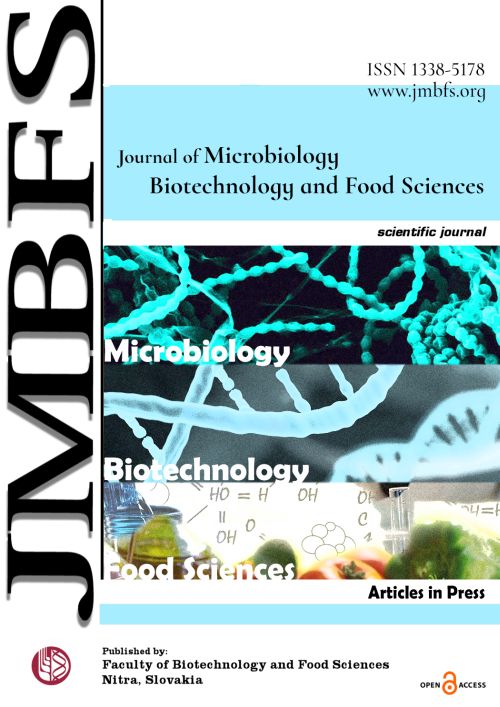ANTIBACTERIAL ACTIVITIES AND PHENOLIC PROFILES OF SIX MONOFLORAL HONEY TYPES FROM DIFFERENT REGIONS OF MOROCCO
DOI:
https://doi.org/10.55251/jmbfs.11600Keywords:
Moroccan honey, Antibacterial activity, Antioxidant activity, Phenolic profile, Pathogenic bacteriaAbstract
Honey is renowned for its health benefits due to a variety of bioactive compounds that contribute to its antioxidant and antibacterial properties. This study aimed to evaluate the antibacterial activity of six Moroccan monofloral honeys against seven pathogenic bacterial strains (Proteus mirabilis, Enterobacter aerogenes, Klebsiella pneumoniae, Escherichia coli, Pseudomonas aeruginosa, and Staphylococcus aureus, all isolated from hospital patients. Thyme honey exhibited the highest phenolic content (188.71 ± 6.87 mg GAE/kg) and lowest IC50 in the DPPH assay (15.70 ± 5.15 mg/mL), indicating strong antioxidant activity. Antibacterial tests revealed Enterobacter aerogenes and Klebsiella pneumoniae as the most resistant strains, with minimum inhibitory concentration (MIC) values above 50% (w/v) across all honeys. Conversely, Staphylococcus aureus was the most sensitive, especially to honeys 2, 4, 5, and 6, with MIC values below 25% (w/v). HPLC analysis identified phenolic compounds such as gallic acid, vanillin, epicatechin, naringin, and rutin in honeys with high antibacterial activity, suggesting these compounds contribute to honey’s bioactive properties.
Downloads
Downloads
Published
How to Cite
Issue
Section
License
Copyright (c) 2023 Houssam Lakhmili, Karima Warda, Abdelilah EL ABBASSI

This work is licensed under a Creative Commons Attribution 4.0 International License.
All papers published in the Journal of Microbiology, Biotechnology and Food Sciences are published under a CC-BY licence (CC-BY 4.0). Published materials can be shared (copy and redistribute the material in any medium or format) and adapted (remix, transform, and build upon the material for any purpose, even commercially) with specifying the author(s).





